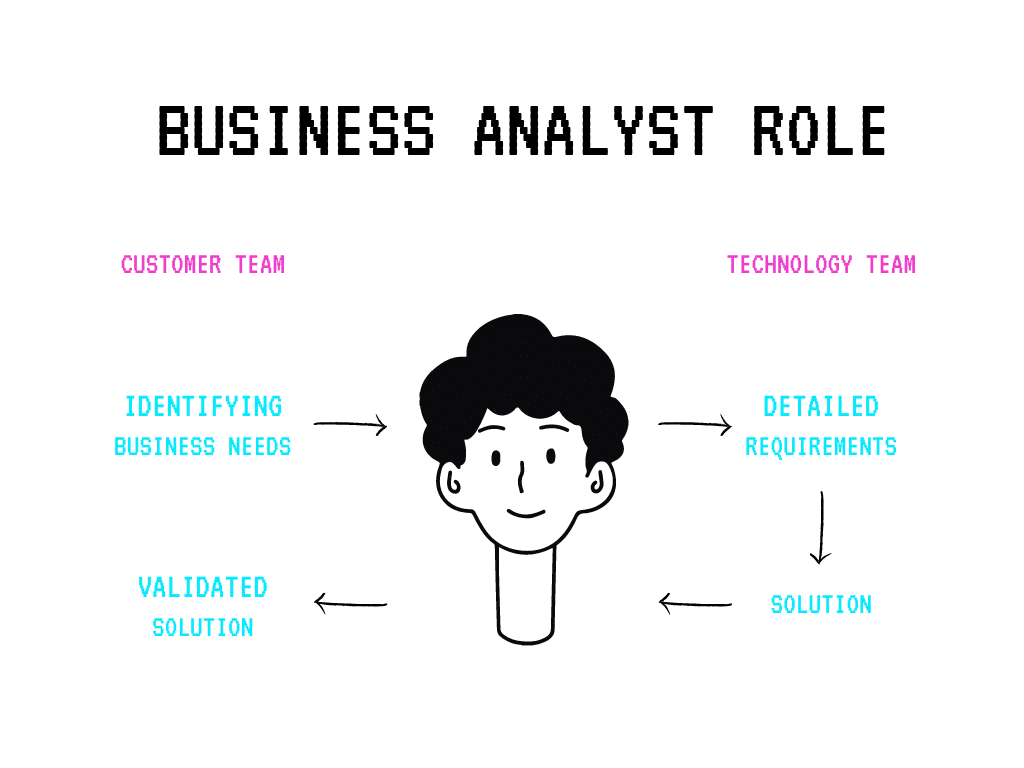Our software developers have tech expertise ranging from cloud-based software deployment to blockchain technology. We deal with mobile apps, complex software systems, cloud solutions, and other software products. All of them we build following business needs and determined conditions.
Our customers can choose a suitable engagement model and check the progress of each development stage. Also, they can make changes at any stage of product development, from its display to its functioning.
Custom-made software solution according to you budget
Startups rely on KitRUM’s innovative approach to birth their tech ideas and scale new products; established companies collaborate with us to revamp their systems and drive innovation.
We adapt the software development process to reflect your ideas and business demands, ensuring that every deliverable is efficient, on budget, and on schedule.
How we do it
Business Analysis
The most common reason for software development failure is a lack of defined business goals and unclear requirements. Holistic business analysis before coding can help to avoid this challenge.
Our BA specialist identifies project direction, business requirements, and primary features during the business analysis phase. Our business analyst efficiently closes the gap between the developer team and your business reps by assessing processes and providing data-driven insights.
Business analysis for software development helps to find the right balance between the company’s ambitions and the end-users needs. It is fundamental to the overall success of your business. Your software product has to align with your business model and requirements.
KITRUM team contributes to realizing your business goals and how to achieve them properly. We reach an efficient running of software products through the integration of an elaborated technology stack, resilient teamwork, and business expertise.

The Discovery Phase
Every software development process at KITRUM must go through a Discovery phase. It involves the project team and business reps working together to identify common goals:
- Produce essential data
- Delineate operational and work boundaries
- Elicit product architecture and requirements
- Choose a tech stack and team structure
- Estimate costs and project development plan
The discovery phase for software development helps to understand the reality of the project. Its benefits include:
- Eliminating loss of time
- Reducing the risks and mistakes
- Saving costs and proper scope of work
Minimum Viable Product
MVP development allows us to create a solution at an affordable price with a set of basic features in the shortest possible time. With a minimum viable product, you can put your investigation background into reality and check if your ideas are as efficient in real life as on paper.
MVP software development results give you a clear direction for the overall development process. It further tells us what would work and what would not, conserving time and resources.
The MVP is not the complete product, but it should be able to execute the basic features of the original product and reflect possible performance levels.
Product Design
Design is an essential part of the software development process. In the design phase, we structure your product for further development based on the needs and input you gained in the previous steps. Our team visualizes your product and appreciates its basic architecture at this stage.
The design phase consists of the following primary elements:
Architecture
This entails the overall design of the product, including its structure, pages, features, button placements, navigation scope etc.
UI / UX
UI/UX design helps to capture clients’ attention, while an exciting and user-friendly interface makes sure to retain it.
Operational
This determines the operational scope of the product, including the operating systems and browsers the product is compatible with.
There are other design metrics like security etc., but they are subject to the individual requirements of the product.
Development
The development phase can also be referred to as the coding process. It is a period when outsourced software development begins. Devs bring the project to life, starting to write codes. At KitRUM, we apply Agile and DevOps methodologies for this coding stage to ensure efficient and quick delivery.
The development phase is often deemed the most challenging aspect of the cycle, but this is different. There could be some difficulties, especially for complicated and large projects, but with proper planning, it becomes easy. It emphasizes the importance of the previous stages. All phases of the development cycle are part of an interconnected chain; missing one can lead to difficulties or, in worse cases, project failure.
QA Testing
One of the most critical aspects of software development at KitRUM is Quality Assurance testing. It guarantees that software performs as expected, is bug-free, and that important user data is kept secured and protected against cyberattacks.
Most developers restrict QA testing until the end of the development cycle, but this approach hampers efficiency, wastes time, and you’re likely to miss out on some important test metrics.
We adopt the Agile development methodology, which allows us to integrate testing phase in every iteration during development.
Here are the different types of testing every project must undergo
Functional
Ascertains the operational efficiency of the software. This is to test whether the software meets its functional expectations or not.
Performance
This is to determine the strength of the software and how it performs under heavy usage or workload.
Usability
Guarantees that software is user-friendly, responsive and runs smoothly for the end-user.
Security
Aids businesses in identifying flaws and safeguarding private information stored on the database.
Unit
The unit testing is to verify that each component operates properly.
Deployment and Maintenance
The development cycle does not end with a series of QA testing. There should be a plan for beta testing, deployment, and software maintenance service after launch. Beta testing involves real-life users’ actions, and collects and analyzes their feedback to improve software solutions by the development team.
The product is only ready and launched after all the necessary feedback has been successfully implemented. It does not end after delivery. Software maintenance and support services are essential for product maintenance and enhancing its efficiency.







